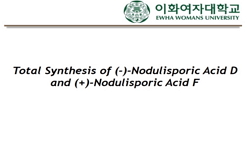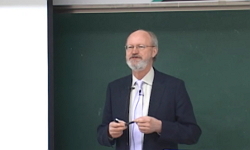The enzymes phosphoglucomutase (PGM) and phosphomannomutase (PMM) play an important role in the synthesis of extracellular polysaccharide. By colony hybridization of the fosmid library of Sphingomonas chungbukensis DJ77, an open reading frame (ORF-1) ...
http://chineseinput.net/에서 pinyin(병음)방식으로 중국어를 변환할 수 있습니다.
변환된 중국어를 복사하여 사용하시면 됩니다.
- 中文 을 입력하시려면 zhongwen을 입력하시고 space를누르시면됩니다.
- 北京 을 입력하시려면 beijing을 입력하시고 space를 누르시면 됩니다.
Cloning and Characterization of Phosphoglucomutase and Phosphomannomutase Derived from Sphingomonas chungbukensis DJ77
한글로보기https://www.riss.kr/link?id=A107626510
- 저자
- 발행기관
- 학술지명
- 권호사항
-
발행연도
2008
-
작성언어
-
- 주제어
-
자료형태
학술저널
-
수록면
507-512(6쪽)
- 제공처
-
0
상세조회 -
0
다운로드
부가정보
다국어 초록 (Multilingual Abstract)
The enzymes phosphoglucomutase (PGM) and phosphomannomutase (PMM) play an important role in the synthesis of extracellular polysaccharide. By colony hybridization of the fosmid library of Sphingomonas chungbukensis DJ77, an open reading frame (ORF-1) of 1,626 nucleotides, whose predicted product is highly homologous with other PGM proteins from several bacterial species, was identified. An additional open reading frame (ORF-2) of 1,437 nucleotides was identified, and its encoded protein shows a high level of similarity with the PGM/PMM protein family. The two genes were cloned into a bacterial expression vector pET-15b (+) and expressed in Escherichia coli as fusion proteins with (His)6-tag. Both recombinant proteins (designated as SP-1 and SP-2 for ORF-1 and ORF-2, respectively) exhibited PGM and PMM activities. The molecular masses of subunits of SP-1 and SP-2 were estimated to be around 58 and 51 kDa from SDS?PAGE, respectively. However, molecular masses of SP-1 and SP-2 in their native condition were determined to be approximately 59.5 and 105.4 kDa, according to non-denaturing PAGE, respectively. The SP-1 protein has a preference for glucose-1-phosphate rather than mannose-1-phosphate, while the preferred substrate of SP-2 is mannose-1-phosphate. Thus, the existence of two proteins with bifunctional PGM/PMM activities was first found S. chungbukensis DJ77.




 ScienceON
ScienceON






